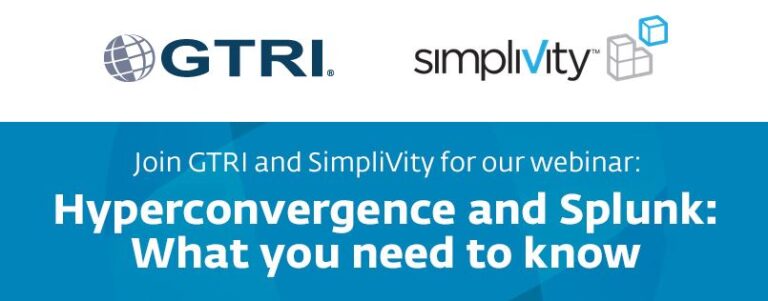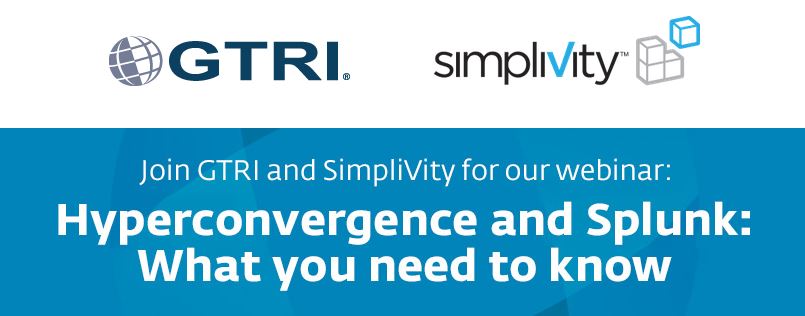A fundamental shift in IT is upon us. IT legacy infrastructure is complex, costly, and not designed to efficiently handle mission critical applications, such as Splunk Enterprise, which run in virtualized environments. Plus, the volume of data that is processed by platforms like Splunk is enormous, requiring additional infrastructure to keep up with demand, and complex storage, backup and recovery schemas.
Fortunately, for organizations that use high-throughput and high performance data monitoring and analytics applications like Splunk, there is hyperconvergence. What is it? As GTRI’s partner SimpliVity explains:
“Hyperconvergence is a computing infrastructure for virtual workloads. Specifically, it’s one that seamlessly combines all of the IT components and services below the hypervisor into an x86 building block. Hyperconvergence means there are no silos of independent IT components. And, there’s no need to manage discrete devices or have specialized training in component-level technology, such as storage area networks (SANs).” (Source: SimpliVity)
This ability to simplify the IT infrastructure has several benefits. It makes operations more efficient, makes it easier and quicker to deploy resources for virtual workloads, and reduces cost.
A hyperconverged platform is an optimal solution to support and complement Splunk environments. I am especially impressed with the OmniStack 3.0 Data Virtualization Platform from SimpliVity. Not only does it offer the benefits of hyperconvergence, it deduplicates, compresses, and optimizes ALL data inline at inception, increasing data efficiency and performance. It also provides “single pane of glass” management for your virtualized environment.
If you’d like to know more about how OmniStack works in a Splunk environment, join myself and Adam Sekora from SimpliVity for a webinar, “Hyperconvergence and Splunk: What you need to know” on November 3 at 11 a.m. Eastern.
During the webinar, we’ll talk about why a hyperconverged infrastructure provides the cost and agility of a cloud-like model without compromising critical capabilities in Splunk Enterprise. We’ll also present use cases that demonstrate how to solve the challenges associated with huge volumes of data including data management, backup and data protection.
I hope you can join us for the webinar. You can also contact GTRI any time with questions.

